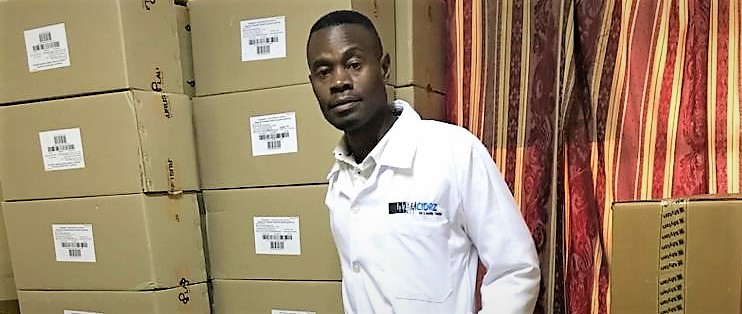
How a stock redistribution tool in Zambia is customizing solutions to ensure malaria patients have access to treatment
Prompt administration of anti-malarial medicines helps patients get back on their feet quickly. When the pharmacy in the Chongwe District Health Office in Zambia ran out of Artemether-Lumefantrine, an essential medicine for treating malaria, pharmacist Christopher Mpundu needed to identify a nearby source of the medicine.
Ministry of Health staff such as Mr. Mpundu rely on data from the electronic Logistics Information Management System (eLMIS). The system shows how many health facilities are overstocked, stocked according to plan, understocked, or stocked out of a commodity. With over 2,800 health facilities and hundreds of different commodities, identifying sources for stock redistribution was time-intensive, prone to errors, and likely to miss redistribution opportunities.
The USAID Global Health Supply Chain Program-Procurement and Supply Management (GHSC-PSM) project, with funding from the U.S. President’s Malaria Initiative (PMI), worked with the Ministry of Health to design and develop the Stock Redistribution Tool, a geographic information system (GIS)-based tool that uses color coding and other visual cues to recommend possible stock transfers to mitigate facility stockout risk. The tool pulls data from the existing eLMIS and automatically analyzes it to identify stock transfer opportunities, which supports decision-making in provincial and district health offices. The Stock Redistribution Tool uses facility GPS coordinates to create an interactive map that indicates the exact location where stock is available, along with quantities and contact information, enabling provincial and district health care workers to identify facilities with excess stock and to carry out redistribution to stocked-out and understocked facilities.
Snapshots from the Stock Redistribution Tool illustrate how the tool displays clinics with available stock so that supply chain managers can easily visualize stock status and identify the best opportunities for redistribution when needed.
Using the Stock Redistribution Tool, Mr. Mpundu was able to connect to Luangwa District Hospital, which agreed to share its stock. With over 2,800 facilities now using the tool, users can examine stock status of an entire province or district, or they can focus on a specific facility and make decisions about stock redistribution at the click of a button, reducing potential stockouts in understocked facilities and ensuring that stocked-out facilities receive stock from overstocked facilities before they are replenished by the central medical stores, a process which can take a little longer.
“The tool helped us find these essential supplies,” said Mr. Mpundu, who obtained the medicine from Luangwa District and restocked the pharmacy, ensuring patients would be able to receive prompt treatment for malaria.


